
Applying for school is among the most enjoyable experiences you’ll ever have, however it may also be nerve-wracking. In the end, there are thousands of universites and colleges across the nation, and lots of good ones, too.
So how can you choose the right college for you personally?
Well, here’s just a little secret: College Scorecard can make things easier by showing you the stats that matter, including the average annual cost for each school, post-graduation salaries, and average education loan debt.
In a statement to Money Under 30, a spokesperson from the U.S. Department of Education said: “For the first time since 2022, the Department is publishing institution-level earnings data, which offer a general feeling of the job outcomes for alumni of the institution.”
This, consequently, can help your decision-making by allowing you to see which school can lead to the very best career outcomes, without breaking the financial institution. Here’s how.
What is College Scorecard?
College Scorecard is definitely an online tool developed by the Department of Education, to help prospective students (like yourself) make informed decisions with regards to choosing a post-secondary institution.
The website features both institution-level data, as well as data by field of study, and that means you not only have an summary of the colleges’ cost, graduation rates, and average median earnings of alumni — amongst other things — but additionally see outcomes by major.
What’s awesome about College Scorecard is that it works sort of as an online marketplace (think Amazon or eBay), but for college.
You’ll find individual stats from over 5,000 colleges across the nation, plus you can click and compare both institutions and majors side-by-side to choose the main one with the best outcomes.
College Scorecard is totally free, and you can can get on by going to collegescorecard.ed.gov.
How College Scorecard can help you choose the best college for you
Look for schools based on proximity, graduation rates, admissions, and more
According to some recent survey by U.S. News, college applications can cost between $45 and $100 a pop (that’s only the application!). While these amounts might seem insignificant, they are able to quickly equal to a few hundred dollars or more, depending on how many schools you intend to try your luck with.
If you want to cut costs, making the most out of each application by limiting your choices to varsities that meet certain criteria, College Scorecard can help you limit your list.
You look up stats from almost any school you’re already interested in, as well as browse schools by major, what lengths they are where you live, highest graduation rates, percentage of applicants who enter — or all three, among other choices.
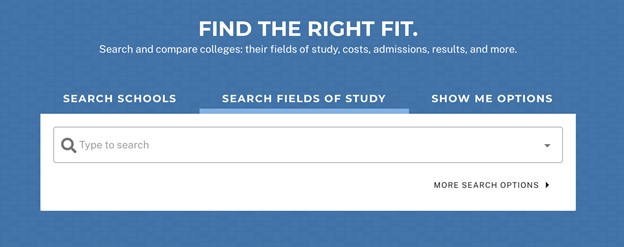
Here’s a good example of the salt water evaporates.
If you simply get into College Scorecard’s general search bar, you’ll see that you will find over 5,600 institutions to choose from across the country.
However, if you’re only thinking about schools that offer a bachelor’s degree in computer science, for example, your research results are automatically reduced to less than 700 institutions, as you can tell below.
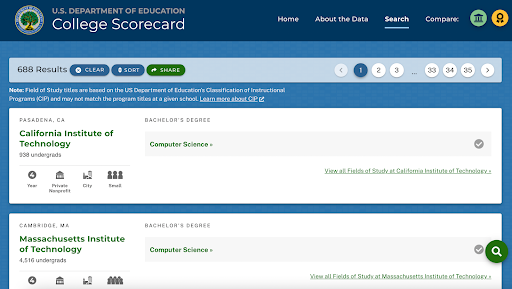
You may also refine your research even further by sorting the results by alphabetical order, graduation rate, average annual cost, and percentage of alumni who earn a lot more than those in the same field with simply a higher school diploma.
Weigh different majors
When I started my college application, I was torn between as being a biology or perhaps a chemistry major. Ultimately, I chose chemistry as I saw more career potential (although I ended up switching again). But if you’re in a similar predicament and can’t choose which major you need to choose, here’s how College Scorecard can help.
When you want to the top right corner of the website, you’ll see both of these icons:
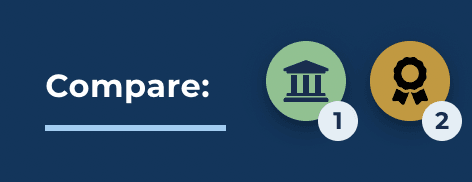
The one using the small building around the left enables you to compare institutions (more about that later), as the one using the ribbon on the right allows you to compare different majors, using these three metrics:
- Salary upon graduation.
- Average education loan debt amongst graduates.
- Number of students who have successfully completed the program.
The major comparison tool is particularly useful when you’re attempting to decide between two majors that are closely related (such as the ones shown below), as it can certainly help you choose the one with the best career outcomes.
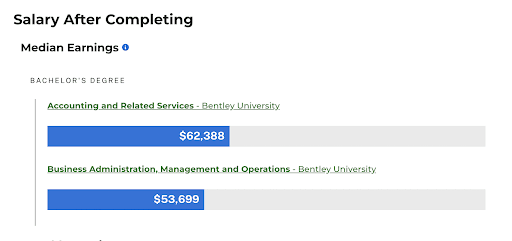
You may also use this tool to compare how students majoring within the same program but at different universities did post-graduation. This is often super helpful if you’ve already decided on a major — but not a university — and wish to choose the one with the most successful alumni.
Compare colleges side-by-side
Remember saving money icon around the playing the little building? That’s College Scorecard’s school comparison tool.
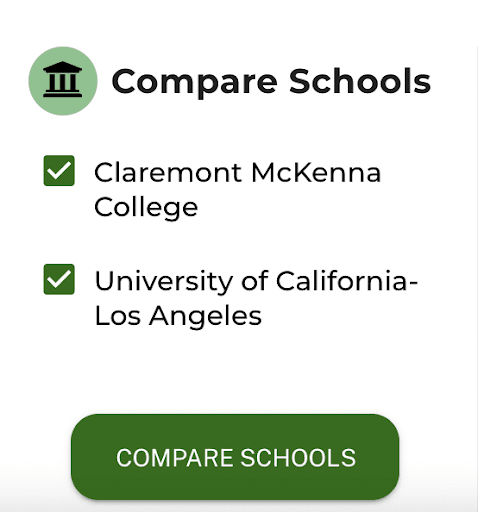
The site’s school comparison tool allows you to see stats from as much as 10 colleges and do a comparison side-by-side.
Some from the stats you’ll have the ability to compare include:
- Average annual cost.
- Graduation rate.
- Median post-graduation earnings.
- Socio-economic diversity.
- Student diversity.
- Average test scores and acceptance rate.
- Percentage of scholars receiving federal student loans.
- Average debt after graduation.
- Average education loan monthly payment.
- Repayment rate.
Besides that, you’ll also see general details about the schools, including what size a student body is, whether it’s public, private nonprofit, or for-profit, as well as when the school is located in a city, rural, or suburban area.
In short, you’ll be able to get an extensive overview of each of the schools you’re thinking about.
This, in turn, will help you to limit your application pool, or make a final pick (if you’re in the final stages), according to which institution better fits your background, household’s finances, and post-grad expectations.
You can also lookup information on associate degrees and certificate programs
Not everyone is thinking about pursuing a four-year degree after they finish senior high school, and that’s okay, too. Individuals with thousands and thousands of dollars in student loans may even say that’s the smarter decision.
In fact, based on the Bureau of Labor Statistics, individuals with an associate degree earn over $46,000 annually, which is about $8K a lot more than those with only a senior high school diploma. Meanwhile, some certificates can result in salaries as high as $74,845 a year, according to Indeed.
If you’re thinking about pursuing these options, just go to College Scorecard’s homepage and click “show me options.”
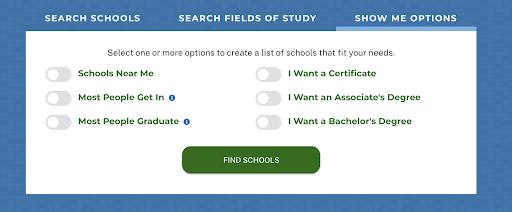
There, you’ll be able to check the kind of education program you wish to pursue, and your results will be narrowed through the schools that provide that type of program. You can also refine your research by academic field and location, simply to name a few.
Why it’s important to weigh your options before selecting a college
When I was picking colleges a few years back, I overlooked two major factors: how much my college of preference was going to cost, and also the average early career earnings for my field of study.
This resulted in a massive amount of student loan debt, along with a less-than-stellar salary — both of which forced me to place things like purchasing a house or starting a household to the side for several years.
That’s why it’s essential to obtain all of the pieces together before buying a school, to ensure you’re getting a valuable — and affordable — education that may lead to a successful career.
Summary
Going to school is a major milestone that will change your life forever. When weighing your choices, make sure you choose a school that does not only adjusts to your academic needs and career expectations, but additionally one whose alumni have done well past their college years.
Featured image: Hodoimg/Shutterstock.com








